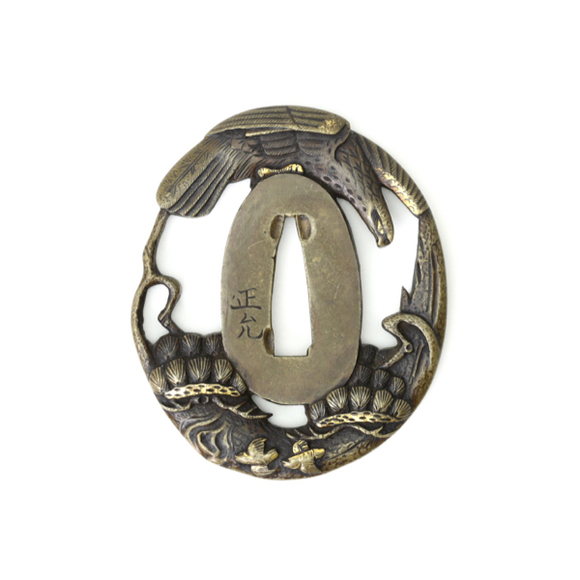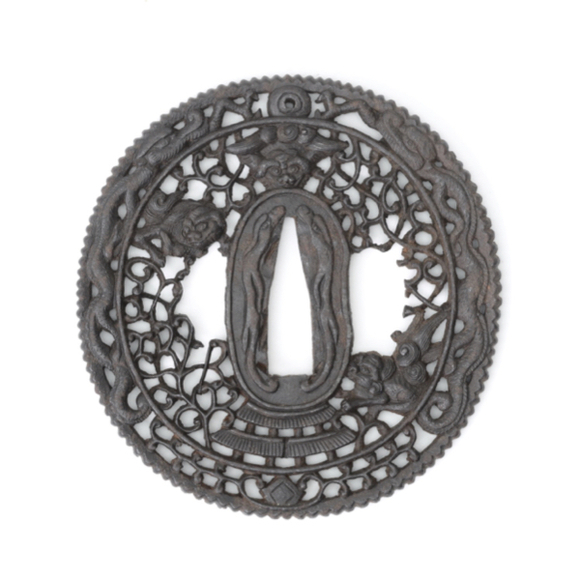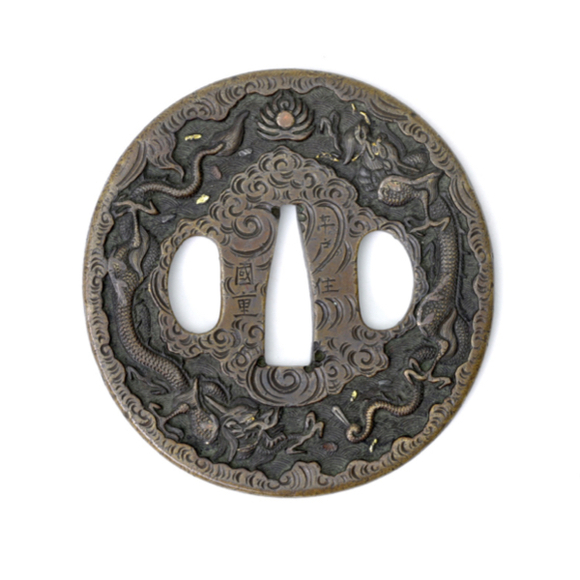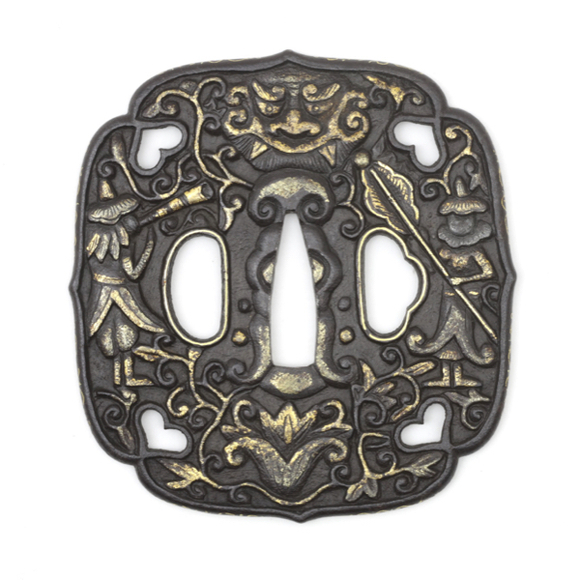Russet iron, one-piece construction with decorative grooves.

Length 176 mm
Width combined 10 mm
Thickness 3 mm
21 grams
Introduction
Wari-kōgai (割笄) is a special version of the kōgai (笄) which means "sword-needle". The kōgai was a hairdressing tool that was carried in the scabbard with a Japanese sword. The wari-kōgai (割笄) was a kōgai that could split to form a pair of chopsticks, called waribashi (割箸) in Japanese. Wari-kōgai are seen from the Edo period onwards.1
This example
A set of iron wari-kōgai that join as one kōgai. A tiny tenon and mortise joint helps hold the halves together when sheathed in the sword's saya.
The facing side is decorated with ginzōgan (銀象嵌); inlay work in silver showing karakusa (唐草) vine work.
Kiri-mon
It also prominently shows the Kiri-mon (桐紋) or Paulownia crest, historically the private symbol of the Japanese imperial family, and later also adopted by the Toyotomi clan who ruled Japan from 1585 until the siege of Osaka in 1615.
The version we see here is the Go-san kiri (五三桐) or "5-3 Paulownia" because of the number of small leaves above the crest, in this case arranges as 3-5-3. This is the most commonly used version of this mon.
Notes
1. Markus Sesko; "Encyclopedia of Japanese Swords". Lulu Enterprises, Inc. 2014. Page 519.




Unusual tsuba with foreign figures and Chinese auspicious symbols.






